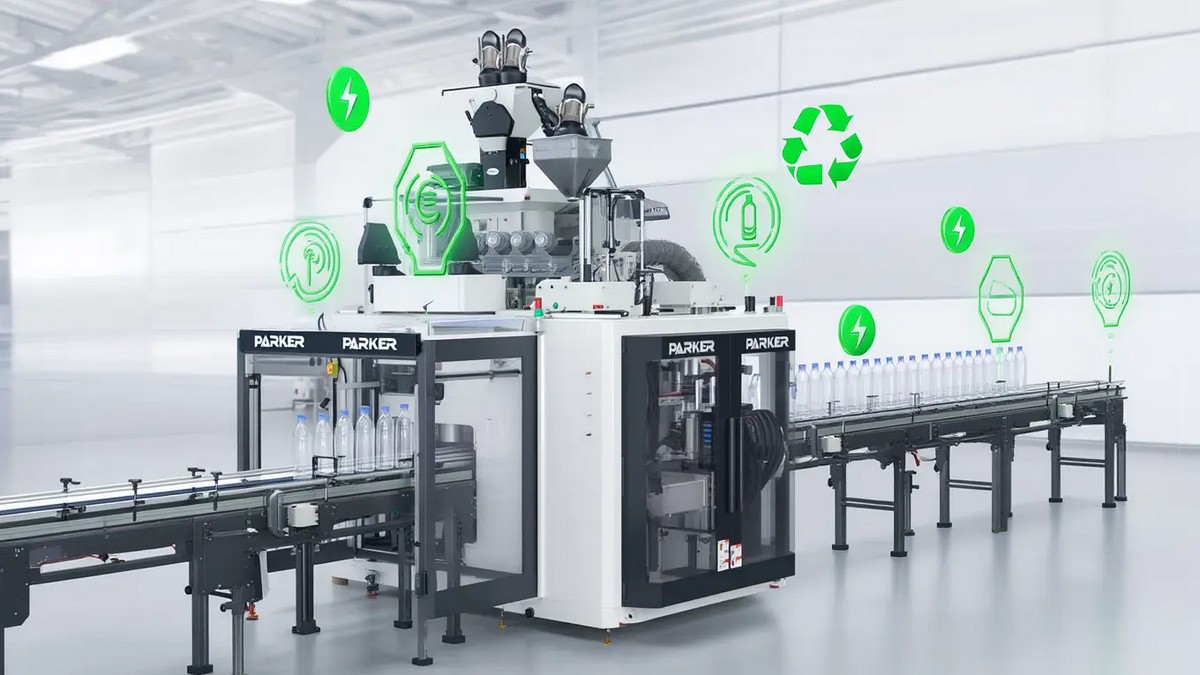According to forecasts, the compound annual growth rate of the semiconductor industry from 2021 to 2026 will exceed 6%. With the increase in investment in storage devices and semiconductor components, the technological advancement of the entire semiconductor industry is also constantly evolving. The emergence of the Internet of Things (IoT) and artificial intelligence (AI), as well as the proliferation of complex electronic products, are driving high-end applications in the consumer electronics and automotive industries, increasing the adoption rate of semiconductor manufacturing to meet growing demands.
What Is Semiconductor Industry?
The semiconductor industry is the aggregation of companies that are engaged in the design and fabrication of semiconductors and semiconductor devices, such as ICs. The global semiconductor industry is dominated by companies from the United States, Taiwan, South Korea, Japan and Netherlands.
Global Semiconductor Industry
The global semiconductor market in 2020 will be approximately 425.96 billion U.S. dollars. During the COVID-19 outbreak, it affected the global economy and business markets. According to statistics, the semiconductor market grew moderately by 3.3% in 2020, and it is expected to grow from 452.25 billion US dollars in 2021 to 803.15 billion US dollars in 2028. The compound annual growth rate during 2021-2028 is 8.6%.
The growth of the global semiconductor market is attributable to the increasing consumption of consumer electronic equipment worldwide. In addition, due to the impact of the epidemic, more home offices and classes are required, and the required electronic communication equipment and video equipment has increased significantly. In addition, the emergence of artificial intelligence (AI), the Internet of Things (IoT), and machine learning (ML) technologies provides new opportunities for market development. These technologies help the memory chip to process large amounts of data in a shorter time. In addition, the growing demand for faster and more advanced memory chips in industrial applications will drive the market's growth within the forecast time. During the COVID-19 outbreak, a high degree of market uncertainty hindered market development, as the entire technology industry was struggling to recover from the Sino-US trade war and the epidemic.
In 2020, the global semiconductor industry's revenue shrank by about 6%. As COVID-19 severely affected Asian car production, China's exports of auto parts to other automakers in the European Union (EU) decreased by 2%. Similarly, countries such as the United States, South Korea, and Japan may reduce their car exports to the rest of the world by 7 billion U.S. dollars. However, the ever-increasing demand for working at home has led to a dramatic increase in global network, communication, and data processing applications. In the long run, this will lead to a slowdown in the growth rate of the semiconductor market.
Market Trends in the Semiconductor Industry
The consumer electronics industry is gaining popularity during the forecast period
- The electronic market has a continuous demand for higher power consumption, faster speed, higher pin count, and smaller footprint. The miniaturization and integration of semiconductors has given birth to smaller, lighter, and more portable devices, such as tablet computers, smartphones, and emerging IoT devices. Every new iteration of consumer electronics is smarter, lighter, and more energy-efficient.
- Semiconductor technology continues to shrink to smaller sizes and geometries, where a single chip can accommodate more and more devices, which means that each chip has more functions. Therefore, many previously used chips are now merged into one chip, providing a highly integrated solution.
- The latest developments in silicon wafer materials allow the use of wafer-level packaging (WLP) processes, in which ICs are packaged, resulting in components almost the same size as the chips, thereby increasing the use of semiconductor ICs in consumer electronic products.
The Asia-Pacific region will become the largest growing region during the forecast period
- The pattern of growth of the semiconductor industry in the Asia-Pacific region is related to the growth of end-users in the region. The Asia-Pacific region is one of the important markets for smartphones and is witnessing the increase of investment in renewable energy, automobiles (especially electric vehicles), and other fields.
- With the increase in the output of electronic equipment in the entire region, the largest national market in the Asia-Pacific region is China. China is the largest single country in the Asia-Pacific region, so it accounts for 56% of the Asia-Pacific electronic equipment market and 34% of the total global market.
- Due to the continuous transfer of various electronic equipment to China, the consumption of semiconductor components in China, Japan, and South Korea is increasing rapidly compared with other countries.
- The Asia-Pacific region has the highest investment in the electrical and electronic fields, riding the wave of artificial technology. Smart, high-performance computing and connected cars will promote the innovation and development of the semiconductor industry.
Taiwan Semiconductor Industry
The four major drivers of the semiconductor market are the sales of notebook computers, 5G applications, high-performance computing (HPC) equipment, and automotive electronics. During the strong demand for digital transformation and the COVID-19 outbreak, driven by the growing home economy, the global semiconductor market grew by 6.8% in 2020 to reach US$440.4 billion. The output value of Taiwan's semiconductor industry increased by 8.6%, reaching 3.49 trillion Taiwan dollars. Taiwan’s semiconductor industry, covering IC manufacturing, design, and packaging, is an important part of Taiwan’s IT industry. Its strong OEM wafer manufacturing capabilities and complete supply chain make it stand out from other competitors. TSMC alone accounts for more than 50% of the global foundry chip manufacturing market.
Taiwan has a complete semiconductor industry chain, production clusters, and R&D capabilities, which will enhance the effectiveness of foreign investors in setting up R&D centers or product manufacturing bases in Taiwan. In addition, the government regards the semiconductor industry as the cornerstone of the development of an important industry, and fully supports the development of the semiconductor industry in Taiwan, and provides relevant preferential measures.
Semiconductor Supply Chain
In the past, the semiconductor industry pursued the maximization of financial benefits, and the production links were greatly differentiated between regions, exposing the fragility in the supply chain. A single global region supplies more than 65% of the global semiconductor industry's production capacity. If this point goes wrong, global semiconductor production will be suspended at risk.
According to the 2020 survey, 75% of foundry production capacity comes from East Asian countries, while 40% of fab ownership is in the hands of American companies. 80% of packaging and testing capacity is in East Asia, and American companies control 12% of production capacity. Among the process distribution, 92% of the advanced logic IC production capacity (below 10nm) is concentrated in Taiwan, and Taiwan produces about 40% of the global logic IC products, which affects the global terminal product output value of 490 billion US dollars.
Semiconductor foundry (general process and advanced process) and packaging and testing capacity are concentrated in East Asia. For Taiwan, the design of advanced processors and double-sided polishing, RF, and baseband chips is concentrated in the United States. DRAM memory is concentrated in South Korea, and raw materials for photoresist manufacturing are concentrated in Japan. East Asia is greatly affected by natural disasters and geopolitics. Natural disasters could cause extensive infrastructure damage, or geopolitical conflicts could interfere with the supply of chips. For example, if an earthquake in Taiwan were to cause an entire fab shipment to be interrupted, not only could Taiwan’s semiconductor industry suffer a short term, 40 billion US dollars loss in revenue, but the global semiconductor industry could suffer a loss of 490 billion US dollars in total output value; equivalent to one year's global semiconductor output value.
Similarly, South Korea’s memory supply chain accounts for 44% of the world’s total. If this supply chain were to be broken, for example if Japan were to stop supplying memory raw materials to South Korea, South Korea’s semiconductor output value would evaporate by US$65 billion. This in turn could result in a 750 billion U.S. dollar reduction in the electronics foundry industry’s revenue.
Therefore, countries realize that the semiconductor industry is already a key industry in each country, and once the supply chain is broken, it will indirectly impact the economic growth rate across the entire supply chain.
In the past, the semiconductor supply chain relied on an optimized industrial division of labor to bring low-cost and high-efficiency output. Various countries are now adopting a self-sufficiency plan which is the opposite of the labor efficiency plan. Increased capital investment will be used to build resilient regional industrial chains. Subsequent annual maintenance costs for the 6 major regions in the world: the United States, China, Taiwan, Japan, South Korea, and Europe, could be as high as 125 billion U.S. dollars, leading to a 35-65% increase in semiconductor costs.
Therefore, BCG’s proposal to the U.S. government is to establish an advanced process (below 10nm) fab with a minimum annual capacity of 20,000 to 35,000 wafers to maintain the operation of critical infrastructure. (Such as government, telecommunications, aviation, energy, and other industries) If this plan were to include advanced logic chips and related applications, it would require about 6 to 7 fabs, which would be equivalent to 200 billion US dollars in private investment and government subsidies.
If self-sufficiency is to be ultimately achieved by 2030, 1.4 trillion US dollars will need to be invested, to create 60 to 65 fabs in the United States to achieve this goal. Diversified production bases do provide resilience in the supply chain. It is recommended to balance strategies to establish a basic satisfaction rate and open transactions to achieve the goal of "resilience." It will also call on the US government to pay attention to basic semiconductor research and the cultivation of science and engineering talents.
Taiwan’s industries need to take stock of weaknesses, deploy in advance, and take the initiative to establish alliances
In the past, Taiwan's industries used financial calculations to pursue ultimate efficiency, but in the future, they must also consider resilience. Since 20-30% of the production capacity must be built outside of Taiwan, although the cost of building a factory outside is higher than it is in Taiwan, all countries are happy to see supply chain investment and will give subsidies and incentives. From the perspective of resilience, it is not inefficient. There are commercial incentives to diversifying risks. Taiwanese manufacturers should take the initiative to establish alliances. If they go overseas to build their production capacity, they may use their value chain advantages to help countries build supply chains. At the same time, they must be more flexible and carefully select investment bases. In the future, two models will be required to operate in two different markets, and by deploying early, Taiwan's manufacturers can build industrial resilience.









.jpg)
.jpg)
.jpg)


.jpg)